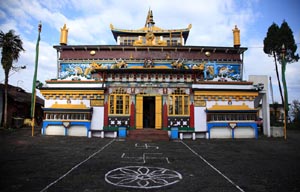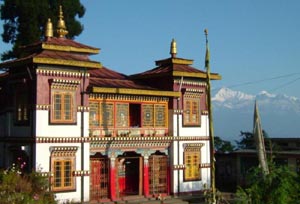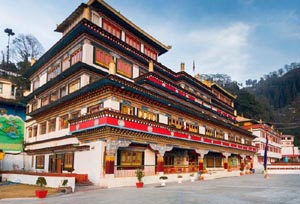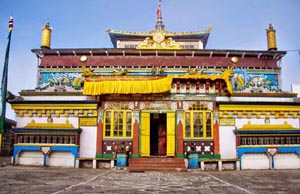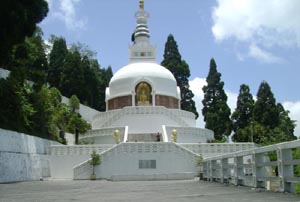Darjeeling Monasteries
List of Famous Monasteries Stupas Padoga in Darjeeling Meaning History Facts
Here you can find list of names and information on Buddhist monasteries, stupas, padoga, in Darjeeling. These famous monasteries of Darjeeling are most visited and most sought after best tourist places. You can also find images of Darjeeling monasteries, stupas, padoga.
According to popular belief this monastery was built during the World War I to avoid the war and bring world peace. Anticipating the destruction that word war would bring, the founder of this monastery constructed this monastry hoping to spread the message of word peace. Today the condition of this monastery is pitiable and is almost in ruins. It needs immediate attention to bring it back to its original glory. Inspite of this the religious and mythological significance of this monastery still remains intact.
This monastery was originally a branch of Nyingma sect's Phodang Monastery in Sikkim. In 1879 it was transferred to Darjeeling and build in the present day Observatory Hill, where currently Mahakal temple is located. When the Nepalese invaded Sikkim in 1788 this monastery was destroyed and a Mahakal Temple was built in its place. Again later the Nepalese troops were driven out of this place by the British East India company during the Anglo-Nepalese war in 1815 and this territory was returned to Raja of Sikkim to whom it originally belonged.
The Dali monastery serves as a very important religious place for Kargyupa sect and acts as a headquarters for Drukchen Rimpoche XII, who is the supreme head of this sect of Tibetan Buddhists. Like all other sects of Buddhism this sect also considers their practices and teachings inclusive of the full range of Buddha's teachings and they follow the fundamental teachings and vows of individual liberation and pratimoksha or monastic discipline.
This monastery follows the Gelug school of Tibetan Buddhism and houses a 15 feet high statue of 'Maitreya Buddha' or the Coming Buddha. It also has photos of Buddha's Disciples, Chenrezi and Chongapa. The Gelug sect of Tibetian Buddhism is one of the newest schools of in this category and was founded by Je Tsongkhapa (1357 - 1419), who was a philosopher and a religious leader of the Tibetians.
This pagoda and temple is affiliated to the Nipponzan Myohoji Buddhist order which is a new religious movement that emerged from the Nichiren sect of Japanese Buddhism and was founded by Nichidatsu Fujii in 1917. This order is a fairly small order of about 1500 persons which includes both monastics and lay supporters. They revere the Lotus Sutra as the highest expression of the Buddhist message. It is also a very popular and worldwide peace movement.
